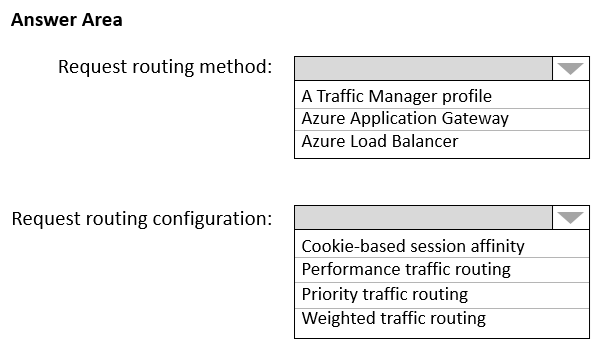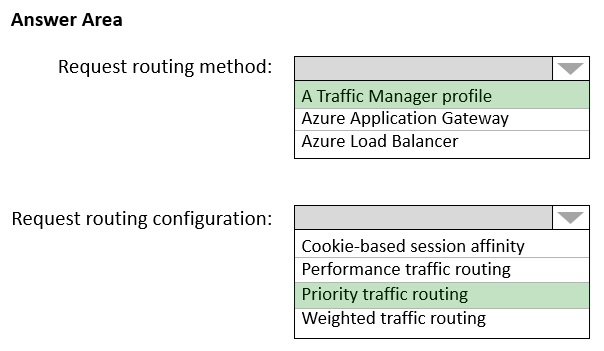HOTSPOT -
You are designing an Azure App Service web app.
You plan to deploy the web app to the North Europe Azure region and the West Europe Azure region.
You need to recommend a solution for the web app. The solution must meet the following requirements:
✑ Users must always access the web app from the North Europe region, unless the region fails.
✑ The web app must be available to users if an Azure region is unavailable.
✑ Deployment costs must be minimized.
What should you include in the recommendation? To answer, select the appropriate options in the answer area.
NOTE: Each correct selection is worth one point.
Hot Area:

